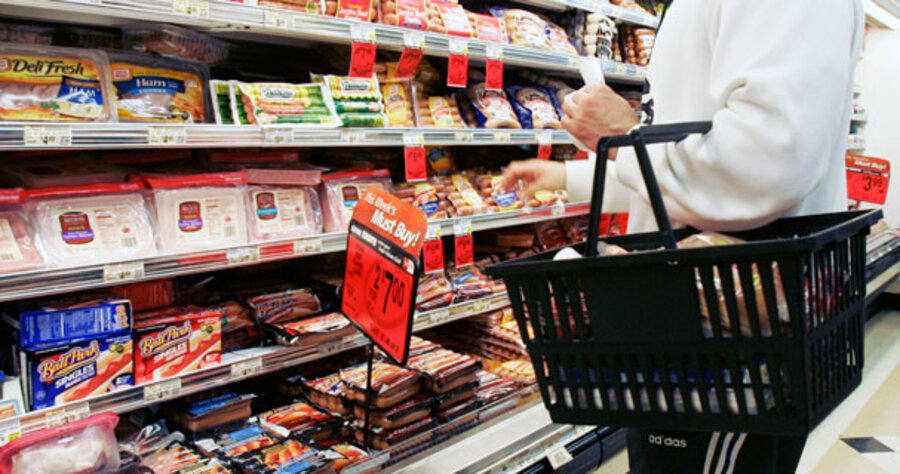How to make food greener
Loading...
Q: Everybody says stop using plastic bags, but what about all the plastic, cellophane, cardboard, and other materials used for packaging food? What can we do to reduce how much of this unnecessary stuff comes wrapped around our food?
– Sunil Sreedharan, Mumbai, India
A: Food packaging is a big problem in North America as well as elsewhere around the world. It’s hard to say just how much of the 130 million tons of paper, plastic, and metals that get tossed or sorted for recycling in major US cities is from food packaging, but the percentage is no doubt sizable. The main problem is in the psychology of marketing: Products in flashy packages attract more buyers.
A 1994 European Union directive requires companies in its 27 member nations to take back and recycle at least 60 percent of their packaging waste, including that used for food items.
But no such “producer pays” laws, which provide incentive for manufacturers to cut back on waste to begin with, exist in the United States or Canada. As such, it falls to consumers to patronize stores and manufacturers that minimize packaging.
One way to take a bite out of packaging is to buy as much in bulk as your family can keep up with. It may take longer to get through that gigantic box of cereal you got at Costco, but think of all the cardboard and plastic your bulk purchase saved over buying several small boxes. Similarly, instead of sending the kids off to school every day with a new juice box in the lunch bag, how about a safe metal or plastic reusable, washable container that you can refill each morning from the gallon jug you keep in the fridge?
Another way to forgo packaging is to reduce your purchases from large supermarkets, where wasteful packaging is the rule. Most natural foods stores have large bulk-buying sections so you can haul away – in large paper or plastic bags – the equivalent of many containers of beans, pastas, rice, or other staples. Frequenting local farmers’ markets – armed with your reusable shopping tote, of course – is another way to keep food packaging out of your home. The website Local Harvest offers a free searchable database of farms across the United States that run Community Supported Agriculture (CSA) programs and participate in farmers’ markets.
It’s worth noting that we tend to toss way too much food packaging where a quick rinse would make the same cans, jars, and jugs useful storage containers or quality recycling fodder.
Soup cans, for example, can easily be recycled into new steel and are collected universally by municipal recycling programs. And while you’re buying soup, opt for the family-size cans and save the leftovers instead of buying single-serving containers. Even when packaging material is recyclable, there’s no reason to waste it, as even recycling uses resources and costs money.
Beyond shopping and sorting more responsibly, individuals also have the power of their voices to pressure food makers to cut back on packaging. You can also try to persuade your elected officials to look into the feasibility of enacting “producer pays” laws in your community, city, or state. And you can talk to co-workers, friends, relatives, and others about the importance of buying in bulk and reducing waste.
Got an environmental question? Write: EarthTalk, c/o E – The Environmental Magazine, Box 5098, Westport, CT 06881. Or e-mail: earthtalk@emagazine.com





